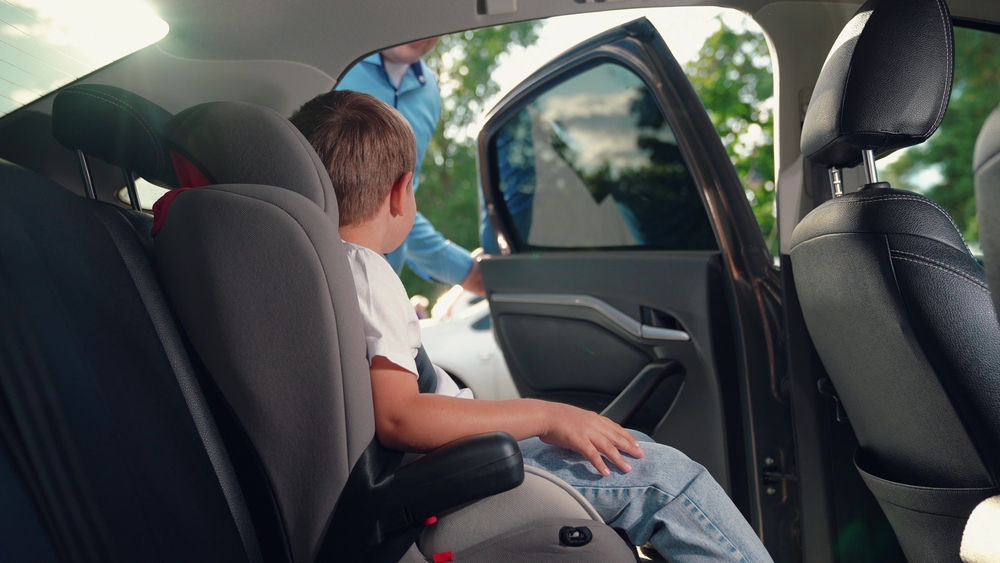About 10 babies each week are treated at hospital emergency departments for injuries suffered in motor-vehicle crashes on New York roads, according to the New York Department of Health.
The numbers show why babies, infants, and children riding in motor vehicles must be properly restrained in child safety seats or child-restraint systems. If you have questions about child safety or need legal help after a crash, a car accident lawyer in New York can offer guidance and support.
The Role of Car Seats in Accident Prevention and Injury Reduction
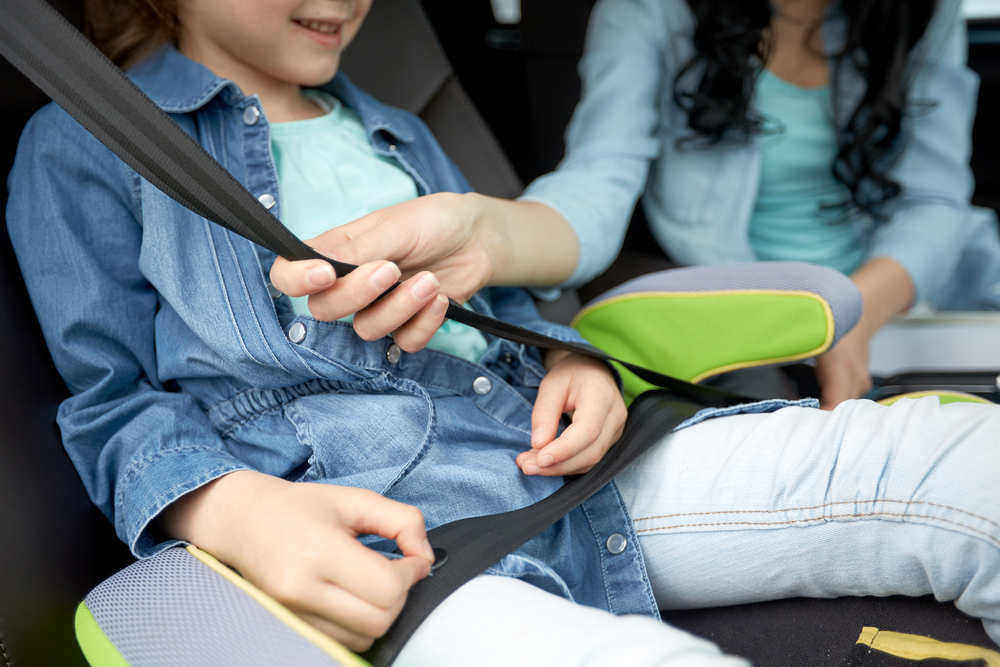
Child safety seats protect young passengers during car accidents. Their importance cannot be overstated, as evidenced by compelling statistics and real-life examples.
Statistics on Car Seat Effectiveness:
- According to the Centers for Disease Control and Prevention (CDC), car seat use reduces the risk of injury in crashes by 71-82% for children, compared to seat belt use alone.
- The CDC states that booster seat use reduces the risk of serious injury by 45% for children aged 4-8 years, compared to seat belt use alone.
- The National Highway Traffic Safety Administration (NHTSA) reports that car seats reduce the risk of fatal injury by 71% for infants (under 1 year) and by 54% for toddlers (1-4 years old) in passenger cars.
- A study published in the Journal of Pediatrics found that children under 2 years old are 75% less likely to die or be severely injured in a crash if they are in a rear-facing car seat.
New York Child Safety Seat Laws
New York law requires that all vehicle occupants be restrained. Anyone looking to transport a child should be familiar with the law.
For example, according to the New York State Department of Motor Vehicles, state law requires that children:
- Under the age of two are required to be restrained in a rear-facing car seat;
- Under the age of four are required to be restrained in child safety seats; and
- All children must ride in child restraint systems until their 8th birthday.
New York requires child safety seats and child restraint systems. All motorists should familiarize themselves with this law, and others relating to the proper restraint of all motorists on New York roads.
The New York Governor’s Traffic Safety Committee recommends keeping children in a rear-facing car seat for as long as possible, but at least until age two.
Buy a car seat that fits the child correctly and install it according to the manufacturer’s directions.
According to New York law, the specially designed seat must meet the Federal Motor Vehicle Safety Standard outlined in 49 C.F.R. 571.213.
New York car seat requirements
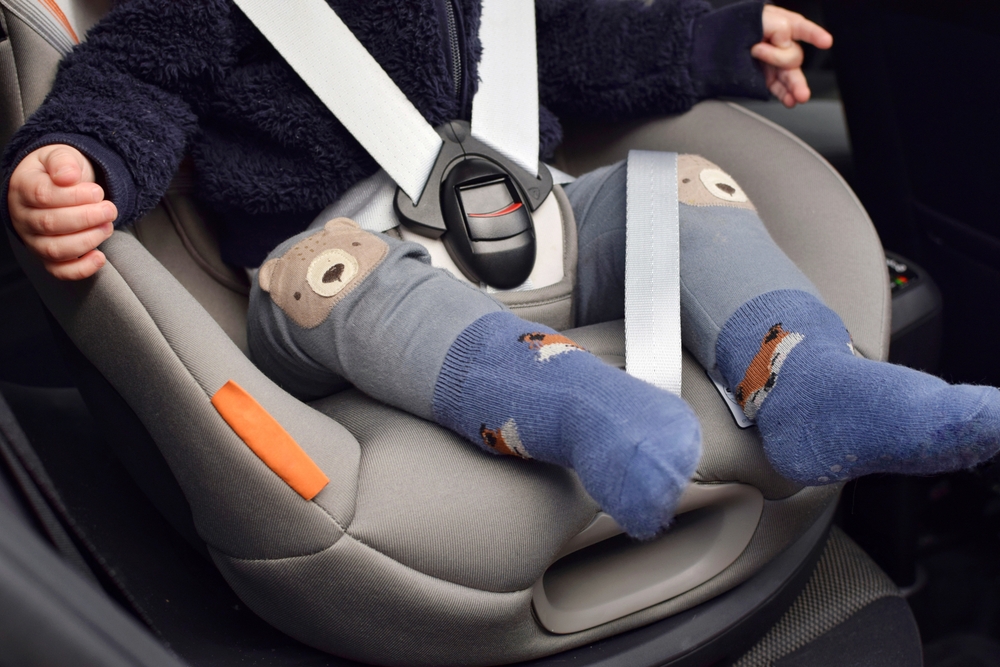
It is important to select an appropriate child safety seat for your children and follow the manufacturer’s recommendations, including those regarding weight and height restrictions and requirements.
As noted, seats and restraint systems must always be certified according to Federal Motor Vehicles Safety Standard 213.
According to the New York State Department of Motor Vehicles, an appropriate child safety seat
- is required for all children under 8;
- must meet height and weight requirements;
- can be a car seat, harness, vest, or booster seat attached to the seat belt system; and
- should not be used in the front seat.
According to the DMV, child safety seats can include infant, convertible, and booster seats. Here’s a bit on each:
- Infant seats are intended for those weighing 22 pounds or less and measuring 25 inches or less.
- Convertible child safety seats are usually for toddlers or infants weighing 40 pounds or less.
- Booster seats are normally for children who have outgrown convertible or toddler seats.
Travel and Car Seats
Ensuring your child’s safety during travel can present unique challenges, especially when using various modes of transportation. Here’s what you need to know about using car seats while traveling:
Using Car Seats in Taxis, Rideshares, and Rental Cars:
- Taxis and Rideshares: New York law requires children to be properly restrained in taxis and rideshares, just as in personal vehicles. However, taxis and many rideshare vehicles are exempt from providing car seats. Parents should plan to bring their own car seats when using these services.
- Rental Cars: Most major car rental companies offer car seat rentals, but availability and quality vary. When renting a vehicle, it’s often safer and more convenient to bring your own car seat. This ensures you know the installation process and trust the seat’s history.
Tips:
- Consider a portable, foldable booster seat for short taxi rides for older children.
- When using rideshares, look for services offering car seat options, such as Uber or Lyft Car Seat, where available.
- Always install the car seat yourself in a rental car to ensure it’s done correctly.
Air Travel with Car Seats:
- The Federal Aviation Administration (FAA) strongly recommends using an approved child restraint system (CRS) or device for air travel.
- Most airlines allow you to check a car seat for free, either at the ticket counter or at the gate.
- If you purchase a seat for your child, you can use an FAA-approved car seat on the plane. Look for a label stating, “This restraint is certified for use in motor vehicles and aircraft.”
Tips:
- Measure your car seat before traveling. It must fit in an airplane seat (typically about 16 inches wide).
- Consider using a lightweight, travel-specific car seat for air travel.
- Bring a copy of the FAA regulations in case you encounter any issues with airline staff.
New York Laws Regarding Car Seats in Different Types of Vehicles:
- Personal Vehicles: As mentioned earlier, New York law requires all children under 8 to be in an appropriate child restraint system.
- Taxis and Rideshares: The same laws apply to personal vehicles, but the parent or guardian is responsible for providing the car seat.
- Buses: School and public transit buses are exempt from car seat requirements. However, if your child is traveling on a smaller bus or van, they may need to use a car seat.
- Commercial Vehicles: If you’re traveling in a commercial vehicle, such as a shuttle or small bus, check with the operator about their child restraint policies.
Regardless of the type of vehicle or mode of transportation, the safest option is always to use an appropriate, correctly installed car seat for your child.
Used Car Seats: Safety Considerations
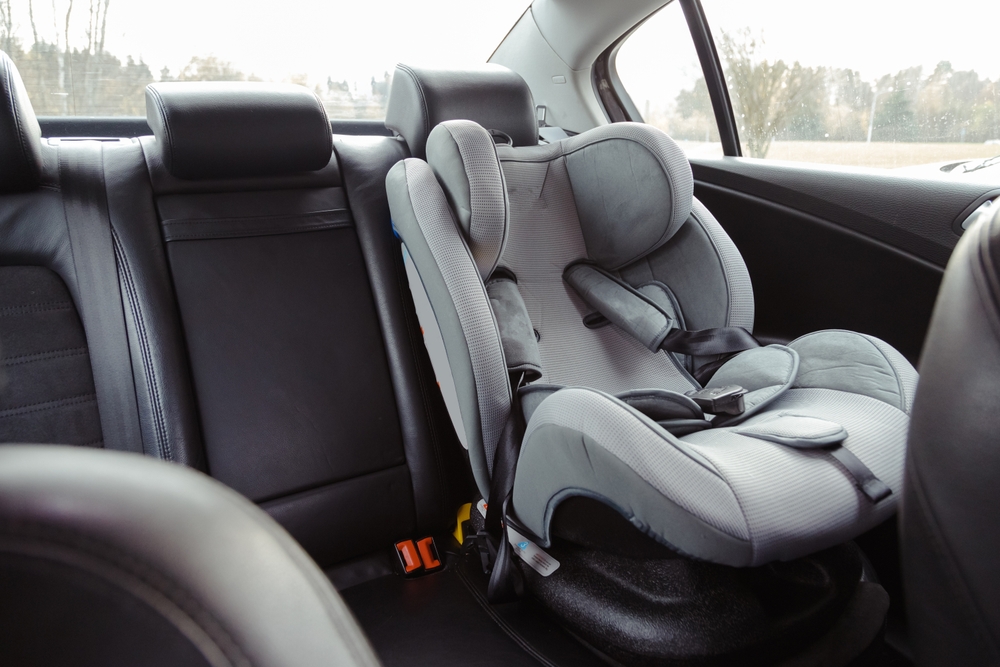
While purchasing a used car seat may seem like a cost-effective option, it’s crucial to understand the potential risks and safety considerations associated with second-hand car seats. Here’s what you need to know:
Risks Associated with Using Second-Hand Car Seats:
- Unknown History: You may not know if the seat has been involved in an accident, which could have compromised its structural integrity.
- Wear and Tear: Used seats may have weakened materials or worn straps that could fail in a crash.
- Outdated Safety Features: Older models might not meet current safety standards or incorporate the latest safety technologies.
- Missing Parts: Used seats may be missing important components or instruction manuals, leading to improper installation.
- Recall Issues: The seat might have been recalled for safety reasons, and the previous owner may not have been aware.
How to Check if a Used Car Seat is Safe:
If you decide to use a second-hand car seat, follow these steps to ensure its safety:
- Verify the seat’s age: Look for a manufacturer’s label with the date of manufacture. Avoid seats older than six years.
- Check for recalls: Visit the National Highway Traffic Safety Administration (NHTSA) website to check if the seat model has been recalled.
- Inspect for damage: Look for cracks, frayed straps, or any signs of wear that could compromise safety.
- Ensure all parts are present: Ensure all components, including harness straps, chest clips, and tether straps, are accounted for.
- Obtain the instruction manual: If the original isn’t available, download one from the manufacturer’s website.
- Verify crash history: Only accept a used seat if you can confirm it has never been in an accident.
Expiration Dates on Car Seats and Why They Matter:
Car seats typically have an expiration date, usually 6 to 10 years from the date of manufacture. Here’s why these dates are important:
- Material Degradation: The plastic and other materials in car seats can weaken over time, especially when exposed to extreme temperatures in vehicles.
- Safety Standards Evolution: Expiration dates ensure that seats in use meet current safety standards, which continually improve.
- Limited Testing: Manufacturers only test seats for a certain period, usually correlating with the expiration date.
- Wear and Tear: Regular use can cause wear that may not be immediately visible but could affect the seat’s performance in a crash.
- Technological Advancements: Newer models often incorporate improved safety features and design elements.
To find the expiration date, look for a label on the seat itself or refer to the owner’s manual. Some manufacturers also stamp the date into the plastic shell of the seat.
Remember, when it comes to your child’s safety, err on the side of caution. If you’re unsure about the safety of a used car seat, it’s best to opt for a new one. Your child’s well-being is priceless, and a proper car seat can make all the difference in an accident.
The imperative of compliance
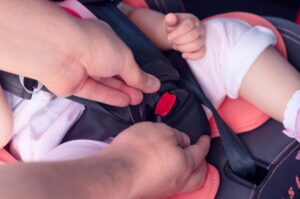
Failure to comply with New York law concerning child safety restraints can bring a fine or driver-violation points. It also increases the chance of injury in an accident.
Remember, the few moments it takes to properly secure a child in an appropriate safety seat can make the difference between life and death in an accident. Compliance isn’t just about following the law—it’s about providing the best possible protection for the children in your care.
Protecting Our Most Precious Cargo
Child safety seats protect young lives on New York’s roads. From understanding the legal requirements to selecting the right seat for your child’s age and size, every detail matters when it comes to child passenger safety.
Remember, the best car seat is one that:
- Fits your child correctly
- Is appropriate for their age, weight, and height
- Can be installed properly in your vehicle
- Is used consistently and correctly on every trip
As parents and caregivers, we can significantly reduce the risk of injury to our children by following these guidelines and staying informed about the latest safety recommendations.
At William Mattar Law Offices, we’re committed to promoting road safety and protecting the rights of accident victims. We hope this information helps you make informed decisions about your child’s safety in vehicles.
Hurt in a car accident? Call William Mattar Law Offices
At William Mattar Law Offices, our NYC personal injury attorneys know the law regarding child safety in vehicles and are experienced in advocating for those who have been injured in a car crash. We can help you recover maximum compensation for pain and suffering. Call our offices today at (716) 444-4444 or through our online form for a free consultation. Help is available 24/7.


